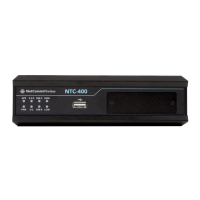Item Value setting Description
Trigger Port Mandatory field. User-
defined is selected by
default.
Enter the expected trigger port (or port range) if User-
defined is selected in the dropdown list.
If you select another popular application from the
dropdown list, the corresponding trigger port(s) and
incoming ports will be defined automatically.
Value Range: 1 - 65535.
Incoming Ports Mandatory field. Enter the expected Incoming ports if User-defined is
selected in the Trigger Port dropdown list.
If you select another popular application from the
dropdown list, the corresponding incoming ports will be
defined automatically.
Value Range: 1 - 65535; It can be a single port, multiple
ports separated by “,”, or a port range.
Time Schedule Mandatory field.
Default setting:
(0) Always
Apply a Time Schedule to this rule, otherwise leave it as
Always.
If the dropdown list is empty, ensure Time Schedule is pre-
configured. Refer to the Object Definition > Scheduling >
Configuration tab.
Rule Disabled by default. Check Enable to activate the special AP rule.
Save Button Click the Save button to save the settings.
Undo Button Click the Undo button to cancel the settings
Table 91 – Special AP Rule Configuration
3.5.4 DMZ & Pass Through
DMZ (De Militarized Zone) Host is a host that is exposed to the Internet but still within the protection of the router firewall.
The function allows a computer to execute two-way communication for Internet games, Video conferencing, Internet
telephony and other special applications. In some cases when a specific application is blocked by the NAT mechanism, you
can indicate that LAN computer as a DMZ host to solve this problem.
The DMZ function allows you to ask the router to pass through all normal packets to the DMZ host behind the NAT router
only when these packets are not expected to be received by applications on the router or by other client hosts in the
Intranet. Activate the feature and specify the DMZ host with a host in the Intranet when needed.
Figure 157 – DMZ Configuration

